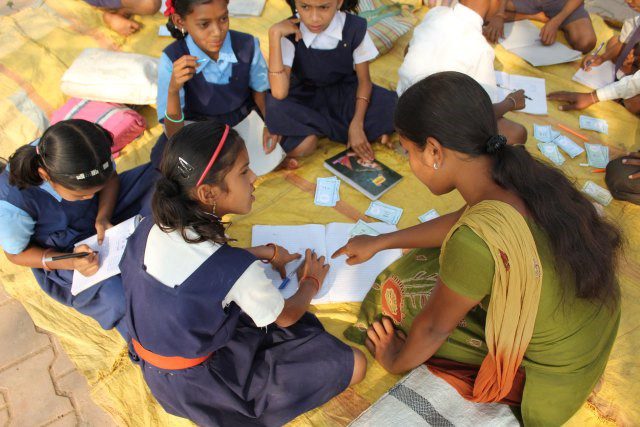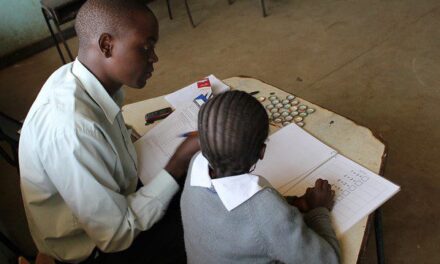This blog was written by Sakina Jafri, PhD candidate at the University of Cambridge.
Nearly one in five people in London identify as having South Asian heritage, yet there remains a striking absence of research focusing on South Asian heritage teachers, particularly in primary schools. My research aims to add South Asian teachers’ voices to the conversation through a social justice and inclusion lens, particularly in light of the race riots of summer 2024 in England and the far-right anti-immigrant protests of September 2025, as well as the broader socio-political attitude towards racially minoritised communities in the UK today.
At the heart of this research is a simple but powerful commitment: to centre teachers’ voices. Using narrative inquiry and participatory methods, teachers were not merely research participants but narrators and storytellers of their lived experiences.
Seventeen female teachers from primary schools across London took part in three rounds of semi-structured interviews exploring their schooling experience, identity formation and pedagogical practices. In addition to the interviews, teachers created a visual timeline of their lives, a creative approach that enabled them to represent key moments, turning points and relationships.
In this blog, I share glimpses from three of these women, Amna, Doris and Sadia (all names have been anonymised), each of whose stories offers a deeply personal and powerful perspective on what it means to be a South Asian heritage teacher in London’s primary schools at the intersection of multiple identities.
Too much and finally enough
Conversations with Amna often stretched over an hour or more, and her visual timeline covered three pages, a symbolic testament to the complexity and richness of her journey. A child of immigrant parents, she grew up negotiating multiple intersecting expectations. “I was always told I was too much,” she recalled. “Too opinionated, too ambitious.” That refrain, she reflected, followed her into adulthood and into her teaching career.
Snapshots from her visualisation capture the intersections of teaching, marriage, motherhood and ethnicity. Early motherhood was a particularly challenging time as she balanced familial expectations and cultural norms with professional aspirations. She described the ongoing pressure to code-switch and “to water herself down” to fit into predominantly white educational spaces, a strategy that offered some professional stability but came at the cost of personal and physical exhaustion.
For Amna, however, the participatory research process became an act of resistance, a way to reclaim her story and affirm the robustness of her identity. “For once,” she commented, “I don’t have to justify who I am.” Her story is a reminder that being “too much” can also mean being more than enough.
Redefining the norm
 At first glance, Doris’ timeline appears “messy”, but that’s the beauty of it. Our lives aren’t always tidy. Every symbol and colour in her representation carried meaning.
At first glance, Doris’ timeline appears “messy”, but that’s the beauty of it. Our lives aren’t always tidy. Every symbol and colour in her representation carried meaning.
 Crown icons represented her support system, including her husband and friends, whom she called her heroes. “I couldn’t be a teacher without my husband,” she reinforced during one of our conversations, acknowledging how essential his support had been to her professional journey.
Crown icons represented her support system, including her husband and friends, whom she called her heroes. “I couldn’t be a teacher without my husband,” she reinforced during one of our conversations, acknowledging how essential his support had been to her professional journey.
But Doris also made visible the barriers she faced. Her disability was central to her narrative, shaping her learning and teaching in profound ways. She spoke candidly about navigating a profession that often lacks understanding or accommodations for teachers with disabilities.
Racism and the lack of career progression for racially minoritised teachers emerged as another major hurdle. Despite her dedication, experience and qualifications, Doris found herself repeatedly overlooked for promotions. “There’s a favourable, normative image of what a teacher looks like,” she said. At the intersection of her disability and her ethnicity, “I don’t fit that image. I’m not the norm,” she explained.
She described working in schools where leadership teams were entirely white. “I’ve worked with three heads called Anne,” she laughed. “When I apply for senior leadership, I go through two or three stages and never get the job. My friends joke, “Oh, Anne must’ve got it again!’”
Like Amna, motherhood was a recurring theme in Doris’ story. She spoke lovingly of her children yet reflected on the professional setbacks that accompanied each maternity leave. Both times she had children; she had to take a pay cut or do supply work.
Doris’s story captures the issues that a lot of female teachers face, while also shedding light on the intersectional tensions of being a woman, a mother, a racially minoritised teacher, and the emotional labour of balancing these identities in an inequitable system.
Acts of quiet resistance
Sadia’s narratives and visualisation, much like Doris’s, stood out in their acknowledgment of enablers and barriers. She highlighted the positive influences in her life like her grandfather, her mentor in teacher training, and her students.
 Letters and notes from her pupils formed a recurring motif of affirmation and recognition for her.
Letters and notes from her pupils formed a recurring motif of affirmation and recognition for her.
She also discussed the barriers which included her disability, her religion, and the ways these intersected in her professional life.
 One powerful image stood out the most – a small Palestinian flag, at the centre of her page, represented a quiet act of solidarity, a gift from a student in a school where mentioning Palestine and the ongoing genocide was not allowed.
One powerful image stood out the most – a small Palestinian flag, at the centre of her page, represented a quiet act of solidarity, a gift from a student in a school where mentioning Palestine and the ongoing genocide was not allowed.
Her story showcases the forms of silencing that teachers often face, especially those from racially marginalised communities and how small gestures of care can become quiet acts of resistance and solidarity.
Sadia’s final act of quiet resistance came in the form of a refusal to continue participating in a system that remains systemically exclusive; she resigned from her teaching position in the middle of the school year due to the continued challenges, increased workload and lack of support. Sadia’s story sheds light on how social, political, religious, and personal dimensions intertwine to shape the experience of teaching.
In conclusion, through the stories of Amna, Doris and Sadia, we see how ethnicity, motherhood, religion and disability can interact to shape South Asian heritage teachers’ experiences in primary schools. These narratives remind us that inclusion in education must extend beyond students to encompass those who teach as well. In listening deeply to teachers’ lived experiences, we do more than document inequities. We begin to reimagine what social justice and inclusion can look like in our schools.






